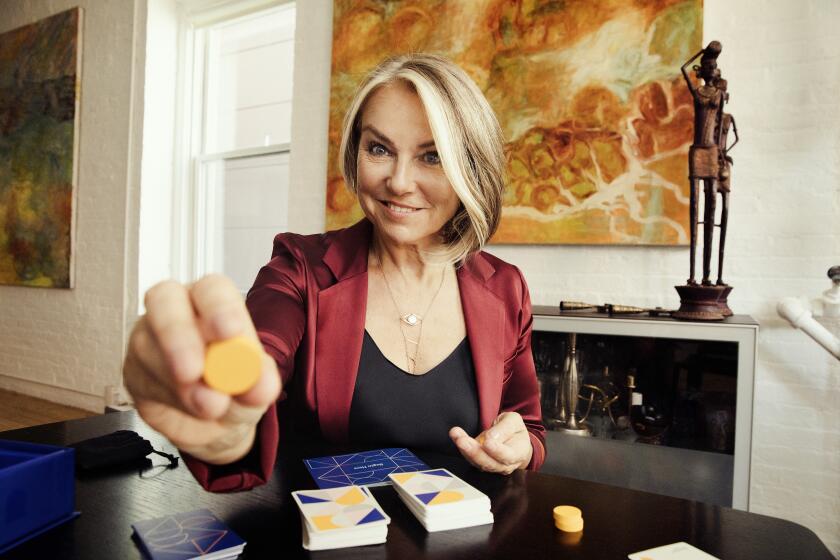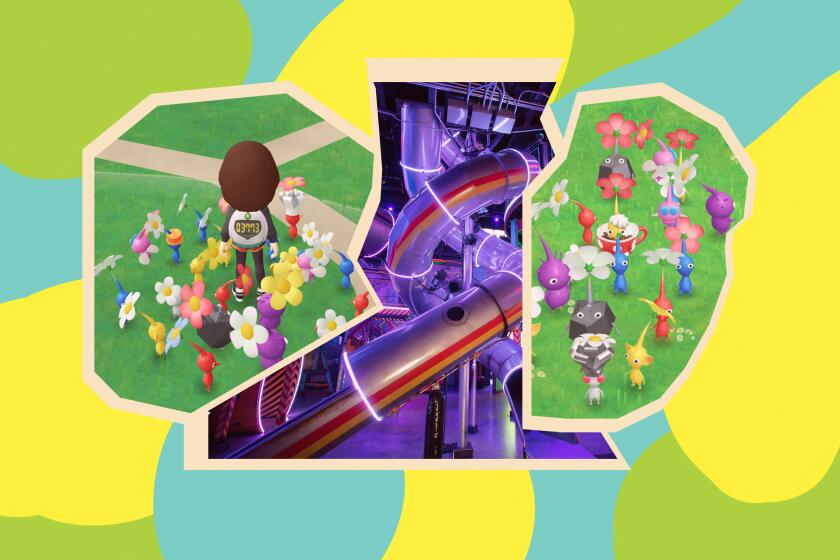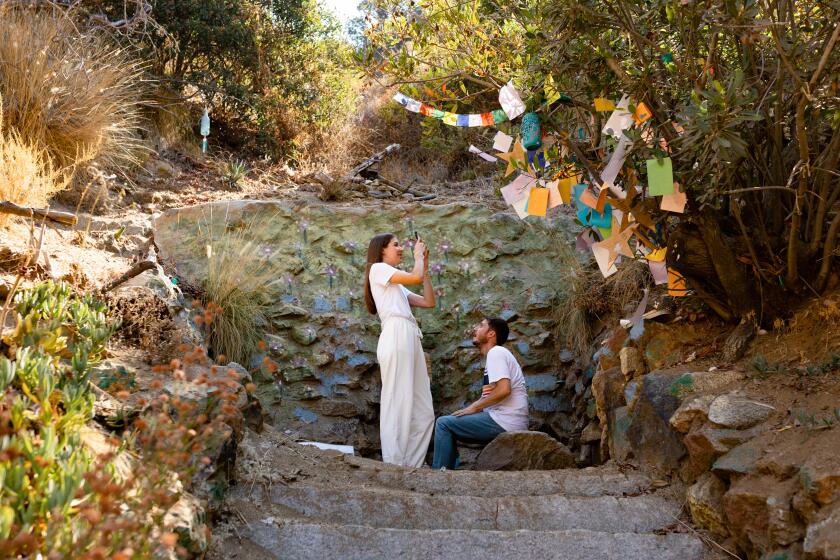My anxiety meter runs hot; VR meditation helped me relax
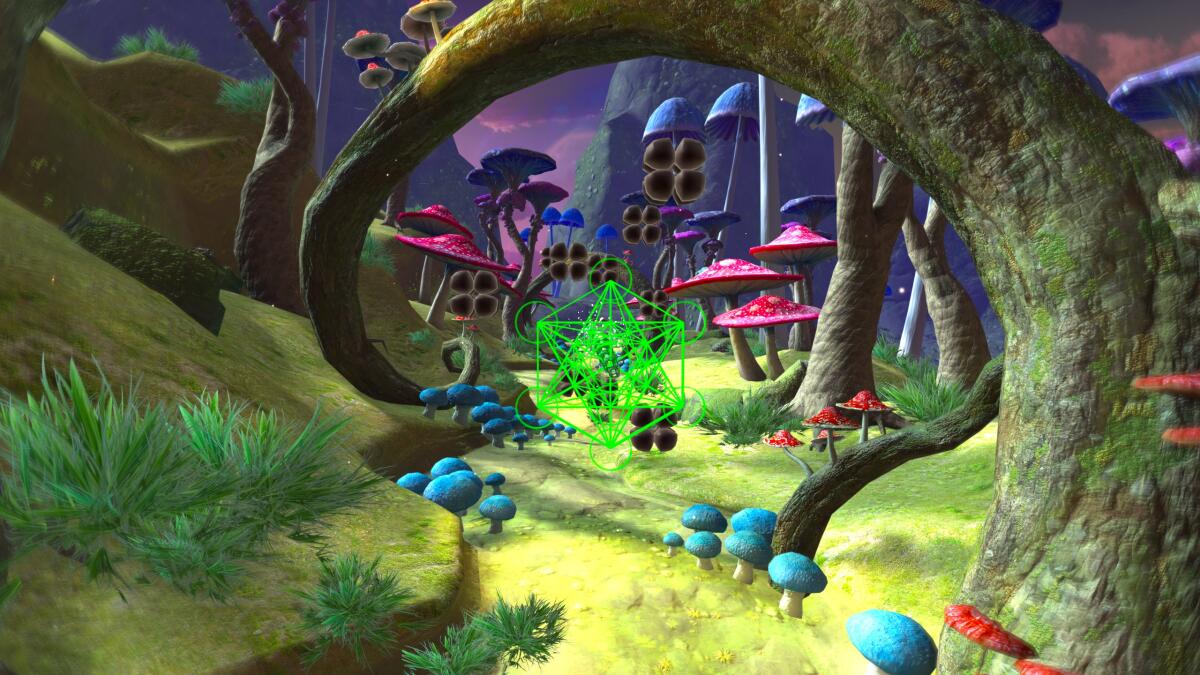
- Share via
“You should try meditation.”
I heard this often during the worst of the pandemic, when vaccines weren’t available yet, and I was frightened to open my apartment door. And I heard it when I was struggling through earlier bouts of stress or depression.
And for too long, I made a mistake. I wrote off such suggestions.
Meditation? Not for me.
My anxiety meter, especially when I am stressed or depressed, runs hot. Anytime I sit in silence and try breathing exercises, my mind races. Suddenly, I’m thinking intently of the very thing that had me turn to meditation.
I told myself that I relax by doing — going to Disneyland, going to an art museum — anything that floods my brain with more stimulation so it can’t go to places I would rather avoid.
But it turns out that the ancient art of mindfulness, often traced back to early Buddhist traditions, is, in fact, for me. Especially if I have a little technology to help.
Before I start my workday, I like to boot up Tripp, a guided meditation app that works with multiple virtual reality devices. After I’m greeted with a Rumi quote, I log my mood on a scale of zero to 10. Some days, I’m lucky if it’s four, but with Tripp, in moments I’m immersed in a translucent, blue world. Sometimes feathers take shape above me. Occasionally, I’m in an ocean at the edge of the cosmos, where I seem to hover above a pool of water. Here, I’m instructed to breathe in as a trail of fairy-like dust floats toward my face. Then I exhale, watching those sparkly figures dissipate, and focus on a light that takes me into a scenario where I gently guide birds with the movement of my head.
How To Save A Life
Pandemic stress, traumatic events and economic uncertainty have upended our world. This series aims to make the cascade of threats to your mental health a little easier to manage.
Sometimes I want to rip off the headset and return to my unfocused reality. But I stick with it, and this virtual world starts to feel like an extended hand. I start to view Tripp as something of a guide, its all-encompassing images urging me to stay focused.
Meditation requires that I power through moments of frustration — moments when daily stresses intrude. I center on the digital birds until the scenery changes, and I’m inside a kaleidoscope, a mythical creature off in the distance.
Did it work? I’m not happy yet, but that’s not the goal. The goal is to start the day with tools to stay centered.
Thanks to these daily excursions, I’ve come to believe that meditation is for everyone. I’ve also come to understand that before I started with VR, I was wrong about pretty much everything related to meditation.

“First, there’s a misunderstanding that in order to meditate, you have to somehow stop your thoughts and stop your attention from wandering,” said Jack Kornfield, who has taught meditation since 1974 and founded the Spirit Rock Meditation Center in the Marin County community of Woodacre. Kornfield appears in Tripp in a section dedicated to meditation education.
“There are some special ways to do that for periods of time, but it doesn’t last, and it’s not the goal. So if you think you’re supposed to do that, you’re always going to feel like a failure, right? The point of meditation ... is to start to become aware of what’s happening inside you.”
VR works for me like bumpers on a bowling lane. Any time my mind races toward the gutter, the imaginative world I had plugged into pings me toward the center.
But am I fully meditating? With Tripp, I’m in a game-like world of wonder rather than alone with my thoughts. Perhaps I’m playing — which I find beneficial to reach a relaxing state. But is it meditating?
Diana Winston, an author and the director of mindfulness education at the UCLA Mindful Awareness Research Center, is “cautiously optimistic” about the prospects of using VR to meditate, though she notes that the world of meditation is as wide as that of sports. VR will be good for some practices and less helpful in others.
An interview with Esther Perel — the psychotherapist behind the popular podcast “Where Should We Begin?” and now a game developer — turns into a therapy session.
I tell her how it’s been helping me, especially with depression. I look to it on a regular basis to get my day started and curtail my tendency to dwell; when I’m down, my desire is to sit and stare and wallow.
Winston says she’s “old school” and would prefer to meditate without virtual reality. I ask her if I’m meditating with training wheels.
“No, I wouldn’t say that,” she said. “I think that you’re using a tool to support you, and you’re meditating. Lots of people do that. And we encourage that. If people find it supportive, keep going. Then, if there’s a point where it feels like, ‘Oh, I actually just want to be in silence,’ go for it. There are no rules here.”
There’s also not a lot of research.
Here’s what we do know: While VR has been lauded for decades as the next big thing, it’s only recently that home devices have been in reach for people with disposable income — expect to spend around $400 — and reliably transportive. The best known, and probably most approachable, is the Meta Quest 2 (analysists estimate that Meta has sold 15 million of them).

In its first two years of release, Tripp says, users have logged more than 5.5 million meditation sessions in the app. The VR social community EvolVR (now owned by Tripp) reports that more than 40,000 people attended its online meditation sessions in pandemic-heightened 2020.
Those numbers indicate a burgeoning market, and Tripp has competition.
In the Maloka app, users can build a virtual island by completing sessions, ranging from breathing exercises to sound baths, many of which have a playful bent. The Guided Meditation VR app plays it more straight, putting the emphasis on calming vistas and narrated exercises.
So is there any benefit to meditating in VR, rather than the old-fashioned way?
“We don’t know,” said Jeff Tarrant, director of the NeuroMeditation Institute in Eugene, Ore., and a contributor to Healium, a VR meditation app that can pair with neurofeedback and biofeedback devices and prioritizes interactive, enhanced images of real-world imagery. VR meditation, says Tarrant, is still too new; the research, too adolescent.
“This is where people can get into philosophical debates,” he said.
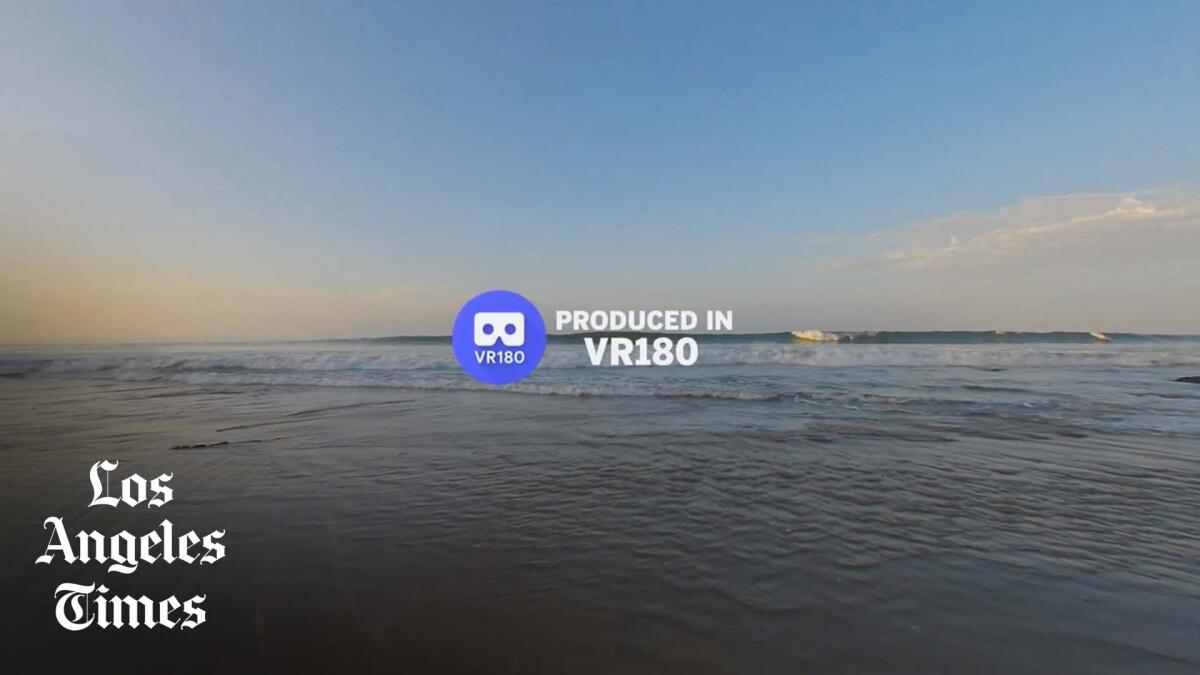
Some wonder, for instance, if VR is helpful for mindfulness meditation, which is designed to get one in touch with thoughts and feelings rather than to reach complete, detached relaxation. The reason? The images are too grand, too awe-inspiring. We’ll be aware we’re in a simulated environment, perhaps making it difficult to bring our full attention to the present moment. In other words, we’re simply enjoying the world we’re in, entering a state of calming playfulness but not necessarily mindfulness.
Hui Qi Tong, a clinical associate professor at Stanford’s Department of Psychiatry and Behavioral Sciences, thinks VR meditation is particularly helpful to those who grew up on technology, as well as those who are housebound, but she is still trying to grasp its potential and limitations.
“In mindfulness meditation, nothing is a distraction,” she said. “Noise shouldn’t be a distraction. Thoughts shouldn’t be a distraction. Everything can be included in mindfulness meditation. [VR] almost seems like a contradiction to mindfulness meditation, which is to see clearly what’s out there.”
Or is it?
“It’s very tricky,” Tong continued. “If you say reality is all subjectively constructed, then what is reality? In Buddhist teaching, there is no reality. I think my office is a reality, but then 10 people say no. So it’s a philosophical question now. Maybe people doing mindfulness meditation will say, ‘No, no no. It’s good for us.’”
In the meantime, there are small studies showing that VR meditation can be beneficial in reducing stress in specific instances — think college students before an exam.
“VR meditation,” said Regina Kaplan-Rakowski, an assistant professor in the Department of Learning Technologies at the University of North Texas, is “a facilitator/tool to better disconnect from the real world.” Kaplan-Rakowski is one of the authors of a study that found that VR can promote relaxation before stressful academic situations.
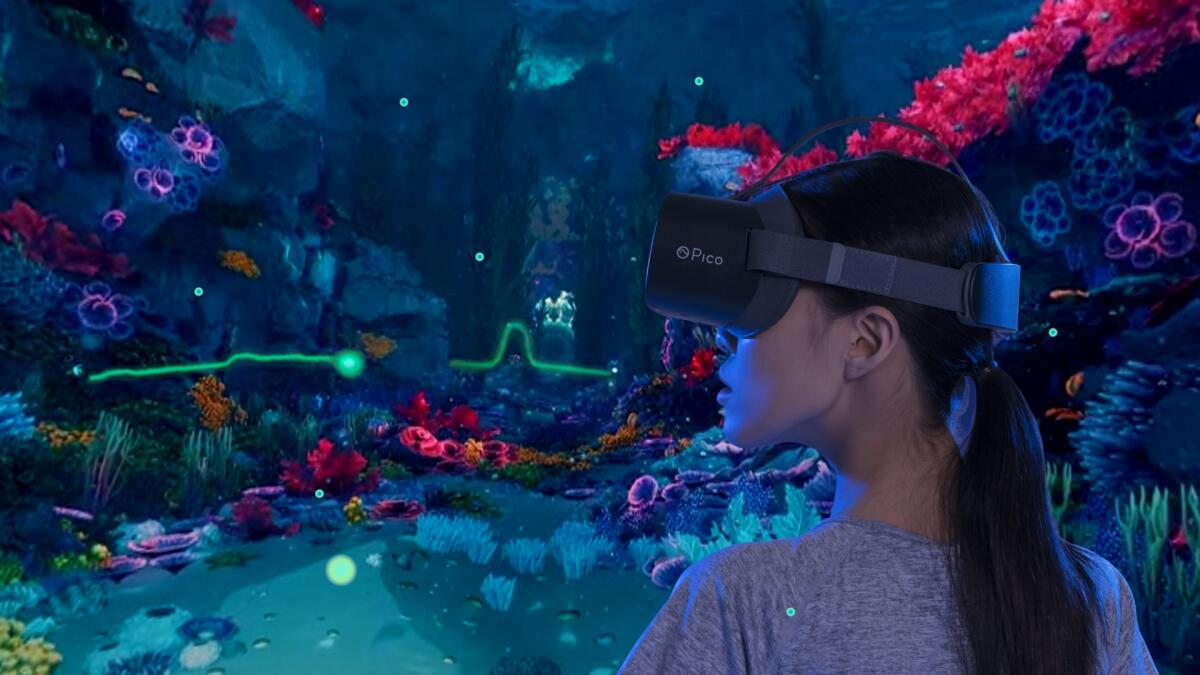
Healium founder Sarah Hill points to early research that shows that VR can relax the mind in as little as four minutes. That’s why she designed Healium to be connected to wearable technology — she wants users to instantly see the effects either augmented or virtual reality have on, say, their heart rate.
“What VR is really good at is quickly downshifting the nervous system, like a fire extinguisher,” said Hill. “You can instantly trick the brain into thinking that it’s not in its current reality, which might be stressful, and that is something [VR] excels at.”
I’m beginning to think I’m motivated to use apps like Tripp because they are game-like. I’ve long believed that through play — deep, philosophical play — we can break down barriers and get to know others. Rules, guardrails and boundaries can lead us into a state of safe curiousness, one where we’re given permission to be vulnerable.
“You live in the 21st century and not the 14th century,” said Jeremy Nickel, a former Unitarian Universalist minister who started EvolVR in 2016. “Our brains have been so game-ified and are so used to making everything a fun, engaging experience.”
Before founding Tripp, Nanea Reeves held various high-level roles throughout the games industry and became persuaded that games have therapeutic power. It’s why so much of Tripp can feel game-y at times. Those birds, for instance, that I was guiding with my head? They were collecting coins.
“I found a lot of mental health benefits from playing video games as a younger person under stress,” Reeves said. “You feel a sense of agency over the environment. That was the mind-set that informed us. Can we capture your awareness through concentration? That’s a little different than destressing, which is about connecting to your breath and deeper thoughts.”
If there’s a defining medium of our still-uncertain pandemic age, it’s games.
Tripp attempts to do both throughout its various modes, and I think that’s the reason it helped me with focusing. Games, after all, demand that one be fully present — they are, in a way, a dialogue between player and creator. In the case of a VR meditation app, even some lifelong scholars of meditation argue that play-like trappings — as well as the mix of visual and audio cues — can give us the illusion of a tutor, a crucial ingredient in learning the art of meditation.
“People learn in a different ways,” Kornfield said. “People learn visually. Some people learn acoustically. Traditionally, listening is said to be the most direct line into your heart.” And the “beautiful thing,” he added, is that we can learn simply, including with a VR headset. “The point isn’t to get to a meditative state but to invite you to walk down a beautiful country road or walk by the ocean. These are a metaphor for dropping the busyness of your life and the stress of your life, and realizing that you can step back and hold it with a spacious love and attention. Then your body starts to settle.”
I’ve come to think of VR meditation as a new language, just one of the “sports” that UCLA’s Winston referenced. Stanford’s Tong cautioned me, however: “It’s as useful tool, but know there’s no escape from real life.”
But who said anything about an escape from real life? What about descending deeper into an alternate reality? So much of meditative VR, after all, models itself on imagery associated with psychedelic experiences, itself a form of treatment for some. Tong acquiesced.
“VR is part of real life. It’s just really odd. This is reality. It’s a virtual reality. It’s the other reality.”
And it’s chill here.
Feeling sad or hopeless ? These 12 beautiful places in Los Angeles will lift your spirits.
More to Read
The biggest entertainment stories
Get our big stories about Hollywood, film, television, music, arts, culture and more right in your inbox as soon as they publish.
You may occasionally receive promotional content from the Los Angeles Times.

